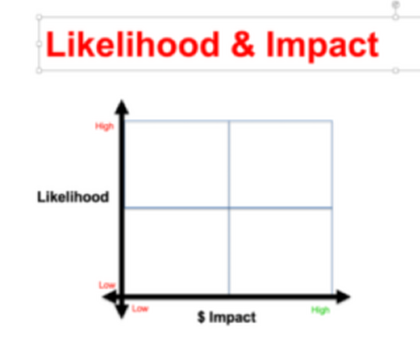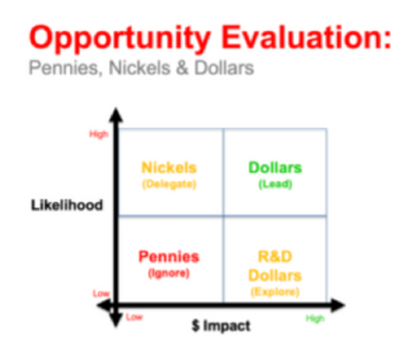Article
What to Do with Your Cash Surplus
October 6, 2020
Growing companies face all sorts of problems and challenges. One of the biggest challenges (and my favourite) is what to do with cash surplus.
There is no right answer as every company has its own philosophy and strategy about how they want to manage cash. The first thing is to get clear on your capital strategy, which also extends into your borrowing strategy and how much leverage or debt you want to have on the balance sheet. The key is to have clear parameters on which everyone agrees.
We often think that growing companies consume a lot of cash. This can be the case for those aggressively wanting to expand their customer base and build market share. However, many others do build up a massive cash surplus. While not possible in every business model, with many of our clients in growth mode we optimize and use all the levers and strategies we’ve learned to build cash — and that position can change quite dramatically.
Then the problem goes from not enough cash to excess working capital burning a hole in their pockets — and people suggesting all kinds of wacky and amazing ideas of what to do with it.
Here are four basic strategies you can use for your war chest now (or when you build one):
- Hold it — to be prepared for a rainy day or a big opportunity
- Use it — as dividends for shareholders, paying down debt or buying back shares
- Reinvest it — what the remainder of this article is about
- Invest it — acquisitions or investments in future partners or start-ups.
The first important thing to assess is ow much of your cash surplus to save for a rainy day versus how much to use in other ways. In an abundant state, options 3 and 4 offer the most interesting opportunities because of the unlimited possibilities. Then the question becomes how to decide which working capital strategy brings the best return.
The ultimate measure of a CEO is an ability to create a return on the capital invested in the business (ROCI or similar measure), which is a reflection of how well they make the decisions about where to put cash and how to make the business better, as a result.
Evaluating cash Surplus Ideas
Many companies have a process for business cases, to rationalize, justify and back up with data whether or not to invest. Here’s the best approach I’ve observed:
Choose the best investment
Ideally have multiple ideas compete for the available capital, so that you aren’t in a “should we/shouldn’t we?” position. It’s more about which, of five or six or seven opportunities, is the best for our business model and to evaluate them by asking:
- How well does the idea fit with our strategy and can make the organization stronger?
- How large is the expected return?
- When and how likely are we to succeed?
- Who, on the team, has the capability and bandwidth to ensure our success?
Think of this competitive exercise like pitching a business idea on an episode of Shark Tank or Dragons Den.
In my new book The 4 Forces of Growth, we share a model called Stepping Over Nickels to Pick Up Dollars and you have to be careful not to do the inverse. This Pennies, Nickels & Dollars Model helps you to evaluate an idea by looking at the likelihood of success, and the size of the dollar impact:


Test your hypotheses
After debate and analysis, convert the idea to what Jim Collins calls a ‘bullet’. This small and repeatable low-risk test helps you prove the idea out without damaging the company. Identifying an opportunity doesn’t mean it will work, unless you’ve done something similar, that fits the fact pattern, many times before. This is a way to test and calibrate if your brilliant thinking pays out in real life.
Aggressively invest in the proven ones
When you’ve tested enough to prove your idea works then it’s time to implement the Jim Collins’ ‘cannonball’ strategy. This involves moving aggressively ahead knowing with close certainty that you’ll get the return on your investment.
Continue to evaluate and adjust
The part that many companies miss, or don’t have a process for, is ongoing evaluation. Just because you have shot the “cannonball” doesn’t mean that those investments should continue in perpetuity. Things change — and that can result in your returns not being fully realized.
This review, ideally done quarterly, looks up to five years back and evaluates the returns on every investment. The review also measures performance related to your initial investment, helping assess future opportunities.
The Challenge
- What is your capital strategy both in terms of additional cash generated and use of debt in the company?
- What is your process and evaluation for investment or re-investment?
About Lawrence & Co.
Lawrence & Co. is a growth strategy and leadership advisory firm that helps mid-market companies achieve lasting, reliable growth. Our Growth Management System turns 30 years of experience into practical steps that drive clarity, alignment, and performance—so leaders can grow faster, with less friction, and greater confidence.
About Kevin Lawrence
Kevin Lawrence has spent three decades helping companies scale from tens of millions to hundreds of millions in revenue. He works side-by-side with CEOs and leadership teams across North America, the Middle East, Asia, Australia, and Europe, bringing real-world insights from hands-on experience. Kevin is the author of Your Oxygen Mask First, a book of 17 habits to help high-performing leaders grow sustainably while protecting their mental health and resilience. He also contributed to Scaling Up (Rockefeller Habits 2.0). Based in Vancouver, he leads Lawrence & Co, a boutique firm of growth advisors.